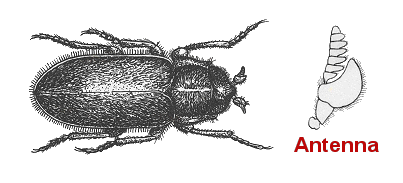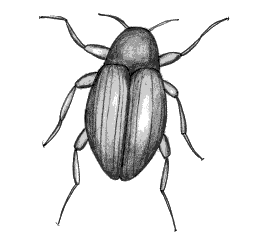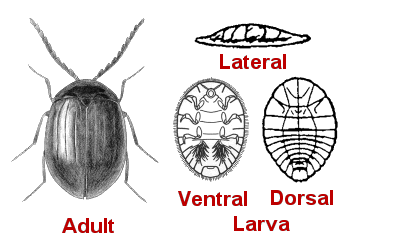Kwik-Key to Common Families of Coleoptera
Answer for your specimen:
If you have reached this part of the key, your specimen may belong to a family that is less commonly collected.
Possibilities include:
Dryopidae
Long-toed water beetles
The common name of these beetles refers to their long claws which help them cling to underwater substrates. They are not well-adapted for swimming. Their bodies are distinctly hairy. Most species have a distinctive type of antenna in which a multi-segmented club folds into a scoop-like pedicel.

Elmidae
Riffle beetles
These small beetles (<4 mm) are usually black or dark gray. The head is partially hidden within the prothorax and the antennae are usually filiform. Elmids feed on algae and organic matter. They are typically found in leaf packs and other debris that accumulates in the eddies of stream environments.

Psephenidae
Water penny beetles
Adult psephenids are inconspicuous beetles with a small, oval, and somewhat flattened body. They creep around in streams by clinging to logs and stones. Their larvae, often called water pennies, are very flat and scale-like. They maintain a sucker-like attachment to the underside of stones in fast moving water and feed on algae.

If your specimen does not match one of the above descriptions, it may belong to a family that is not exclusively aquatic. To continue your identification, go to the terrestrial part of this key.
Copyright 2019, John R. Meyer, North Carolina State University
All rights reserved

